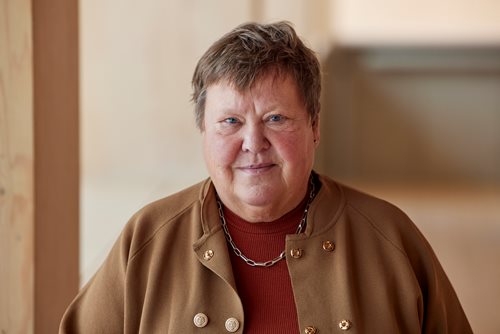The values, and the spirits of the forest
Column
I lay in bed next to my grandfather and listened, as he told me about the forest spirits. My grandfather was born in 1887 on a small farm in the highlands of Småland. There were not only people on the farm and in the forest, but also creatures, non-human and non-divine beings, that you had to keep on good terms with.

In one part of the forest the Skogsrå, one forest spirit lived, she must not be disturbed. Little grey gnomes could show you where the best fishing was, but they would also steal grain from the barn. They affected the availability of food and the survival of a poor family. You had to respect the Vättar, the grey sprites, or you could get sick or have an accident. The trolls lived deep in the forest, where children were not allowed to go, because they might be stolen away. At dusk and dawn, the elves danced across the mossy grounds.
The forest was essential for survival. It provided timber for building, which was used in many agricultural and domestic tools, and the wood provided heat. There were berries and mushrooms in the forest, and if you were lucky you might catch a hare or a deer. The few cows there were, would graze in the forest. But the forest also linked people together, as they walked through the forest to visit other farms or a neighbouring village.
The value of the forest was mainly financial, but it also had social and almost mythological values. Today, we talk about financial, ecological and social sustainability, where sustainable development is defined in the so-called Brundtland Report like this: ‘Sustainable development is development that meets the needs of the present without compromising the ability of future generations to meet their own needs’.
We can probably all agree about the huge financial value of forests for individuals, for companies and for Sweden as a country. That forests and forest land are prerequisites for biodiversity should be undisputed, as should the importance of forests in absorbing carbon dioxide and replacing products that make a major negative contribution to climate change.
Most Swedes have some kind of relationship with the forest for recreation, mushroom picking or hunting. Some people are afraid of the forest, but many of us love the forest for its beauty, which gives us a sense of being part of nature, of well-being and of tranquillity.
That's why I think it's particularly gratifying that Mistra Digital Forest has included projects on the social values of forests in the programme too. What makes us appreciate a forest? Can this be translated into measurable parameters? And how are social values integrated into different planning tools? These are some of the questions I'm looking forward to Mistra Digital Forest being able to answer. I also believe that digital tools can help to enhance people's experiences in the forest.
But even in our digital age, we have to respect the forest spirits. Otherwise things could go badly wrong!
Ingrid Petersson
Member of the Mistra Digital Forest Program Board
